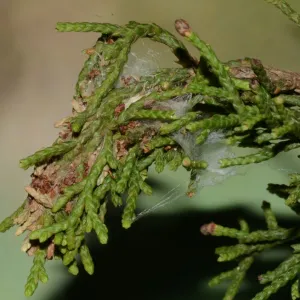by Delmar Cain – Boerne Chapter, Native Plant Society of Texas
Published in the Boerne Star on June 20, 2014


As I write this article another Burges Fest Parade is just around the corner. Celebrating the German heritage of Boerne on Father’s Day Weekend, the parade and events scheduled give little hint of the rustic farming and animal husbandry that brought the early settlers to a new country. An annual celebration does not necessarily connect us to the past, where each day brought an encounter with the struggles of nature.
The other day I was trying to purchase a small piece of equipment in a store to aid me in taking photographs of plants, insects and caterpillars. The sales person was very helpful and asked what I wanted to photograph. When I told her caterpillars among other things, she looked at me quizzically and asked, “Are the caterpillars different?” She readily agreed to a three-minute lesson on caterpillars after I paid my bill.
Smart phones, the cloud, drones and solar panels grab our attention on a daily basis. But our modern lifestyles require very little basic information of the world of living things beyond the ring of human activity? Those from whom we are the descendants could not afford to live in such isolation from the natural world. A caterpillar that ate your potato plant deserved more attention than the caterpillar that ate the Prairie coneflower.
Recently I found a connection to the past in an unexpected way. It was by way of either a local or possibly wider outbreak of the Juniper Budworm Moth. In May I noticed that the scale-like leaves at the end of a branch on an Ashe juniper were stuck together. As I looked more carefully I noticed that this same cocoon like structure was repeated perhaps as many as 50 times over the tree. And the same structures were on every Ashe juniper tree that I examined in the area around our house.
My curiosity got the better of me and I pulled one of the structures apart. It was a protective shelter for a green larva about three-fourths of an inch long. I had an idea what it might be, since I mentioned it in a Boerne Star article on Ashe junipers in 2012. I decided to clip off the structure and put it and the larva in a container. With no additional food, the larva in its secure structure continued right on through its appointed life cycle. After the larva pupated in a couple of weeks it turned into a moth a week later. It was a Juniper Budworm Moth.
Was it a real outbreak like the one reported in Travis, Hays, Comal and Blanco Counties in 2002? It is hard to have an outbreak at one house. I do know that a reliable source living in Wimberley told me that she had seen the same moths at her house. You might check the trees in your yard. Evidence of the structure will still be there even if the moth has flown. It almost makes you want to cuddle that Ashe juniper in your yard for hosting another group of freeloaders.
What was the connection to the past? Augustus Radcliff Grote first described the Juniper Budworm Moth (Cudonigera houstonana) in 1873 from a specimen collected in Texas. From a simple observation I connected to the natural world and to the person who observed that same cocoon structure in Texas more than 130 years ago.There are times when, in spite of our close observation, nature successfully hides it beauty in plain outer garments. But once it is seen, it is difficult to believe that it grew unobserved.


Just ask Kip Kiphart, who recently found a native orchid growing under an oak tree near his driveway in Cordillera Ranch.
According to Joe Liggio, who has authored a book on Texas orchids and who identified the species for Kip, the Crested Coralroot Orchid (Hexalectris spicata) “can be sporadic, only appearing when conditions are right. Recent rains probably triggered it blooming.
It isn’t officially tracked by TPWD…It is quite rare.”
Kip has lived at his home for more than ten years and had never seen the orchid bloom. The orchid may have been living there when the oak tree sprouted from an acorn, which had fallen from a parent tree. That orchid, native and uncultivated, shows that we may walk by a connection to the unknown or forgotten past each day as it lies just beneath our feet.


